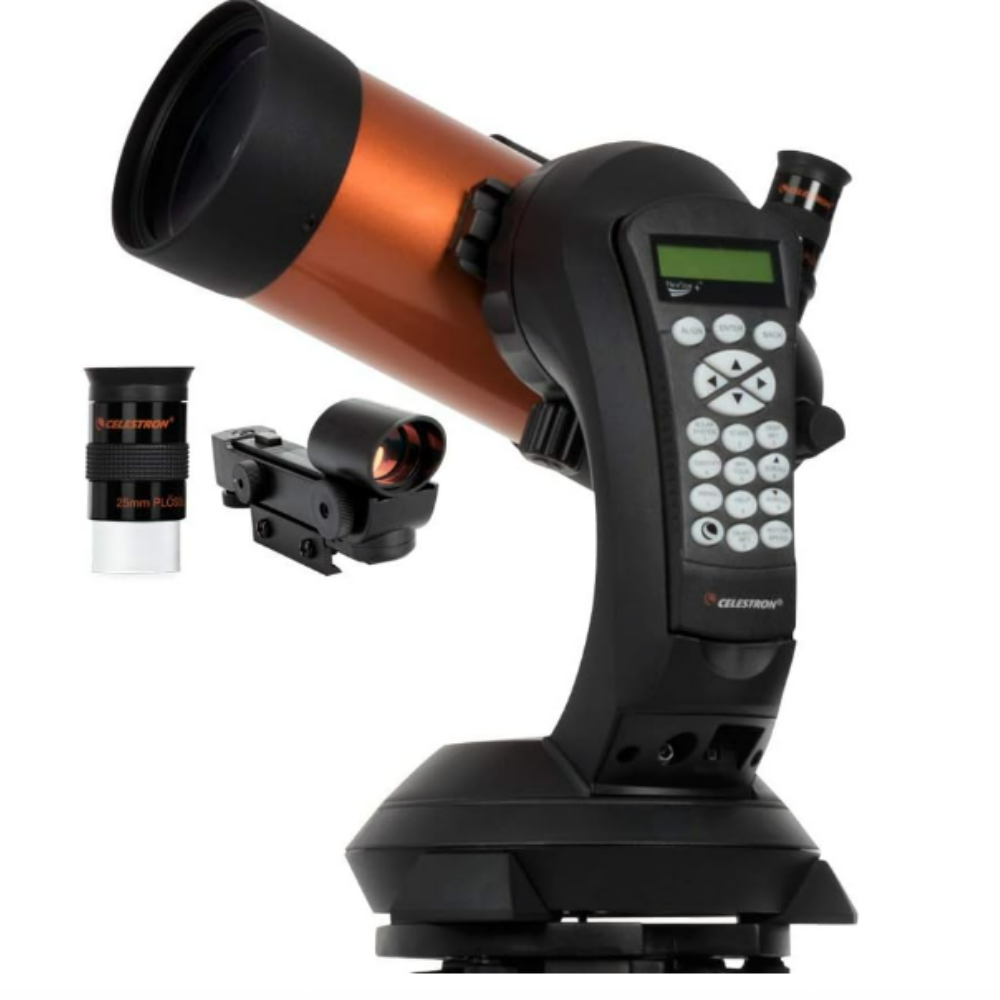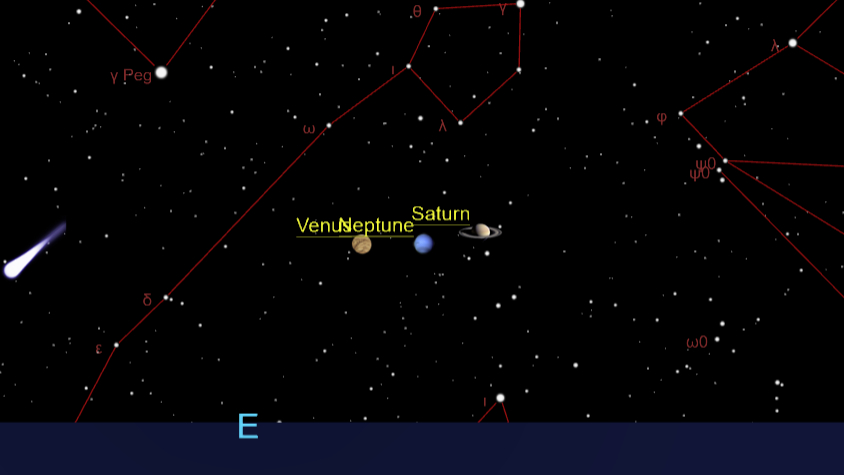Venus will partner up with the giant planets Saturn and Neptune to form a line up in the pre-dawn sky on May 8, with fleet-footed Mercury remaining nearby close to With Mercury sticking low to the horizon in the hour preceding
To find the planetary line-up, stargazers should look to the eastern sky below the head of the western great fish represented in the constellation Pisces a few hours before sunrise on May 8, which will occur for viewers in New York at 5:46 a.m. (0946 GMT). All three of the tightly packed worlds will have risen above the horizon by 4:15 a.m., with Venus (magnitude -4.38) on the left, and Saturn (magnitude 1.18) on the right.
Neptune will make for a trickier viewing target, given that it is the only major planet in our solar system that is not visible to the naked eye. The ice giant's relative dimness comes as a result of its far flung orbit, which takes it over 30 times further from our sun than the average distance between our star and Earth, according to NASA.
TOP TELESCOPE PICK:

Want to explore the planets of the solar system for yourself? The Celestron NexStar 4SE is ideal for beginners wanting quality, reliable and quick views of celestial objects. For a more in-depth look at our Celestron NexStar 4SE review.
In order to spot Neptune, stargazers will need to get their hands on a good pair of binoculars or a telescope, which will reveal the reclusive world as a blueish point of light. On the morning of May 8, Neptune will be particularly easy to find sitting around half way between Venus and Saturn. The pre-dawn hour will see the planetary trio crammed into a 10 degree patch of sky (about as wide as your fist at arm's length), making them a tempting target for the astrophotography community.
Planet Mercury will also peek its head above the horizon shortly before the sun rises. As always astronomy enthusiasts must always take care to never point binoculars or any telescopic equipment towards the rising sun, and to avoid staring in its direction with the naked eye, as doing so can lead to permanent loss of vision.
This configuration of planets will hold relatively stable from the perspective of Earth for the following two nights. However, by May 11 it will become apparent that Neptune and Saturn are growing ever more distant from brighter Venus. As the month wears on, Venus will remain relatively close to the eastern horizon, while its two planetary siblings drift maintain a close formation as they drift to a more south easterly position, and rise ever higher in the morning sky.
Interested in seeing the planets of the solar system for yourself? Then be sure to check out our guides for the best binoculars deals and the best telescope deals available in 2025. Those looking to create a permanent record of their stargazing sessions should also read our guides on the best cameras for astrophotography, and best lenses for astrophotography can lenses to help you focus in on your next celestial target.
.png)
 German (DE)
German (DE)  English (US)
English (US)  Spanish (ES)
Spanish (ES)  French (FR)
French (FR)  Hindi (IN)
Hindi (IN)  Italian (IT)
Italian (IT)  Russian (RU)
Russian (RU) 









Comments